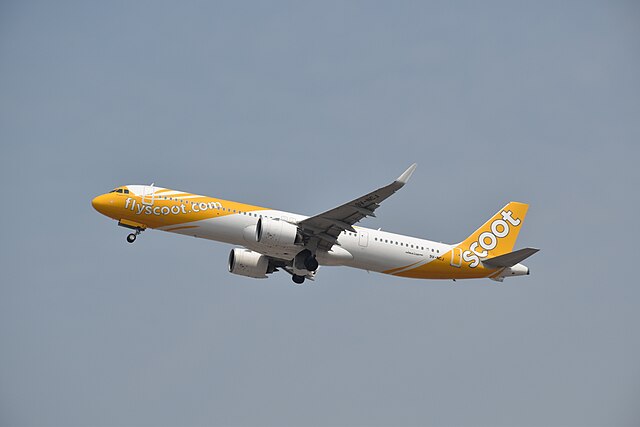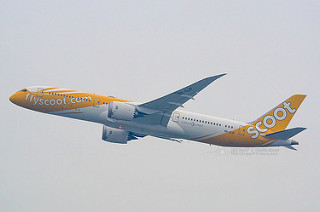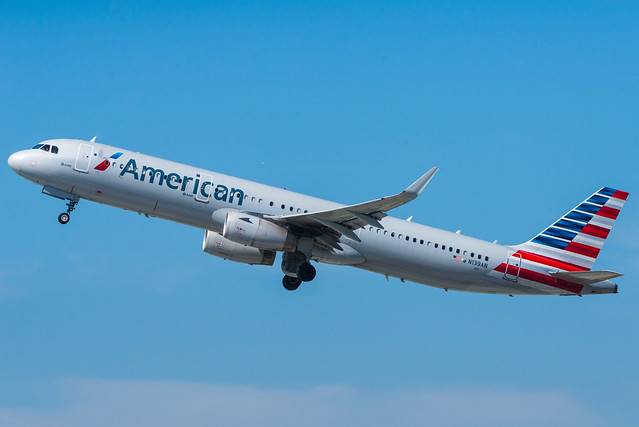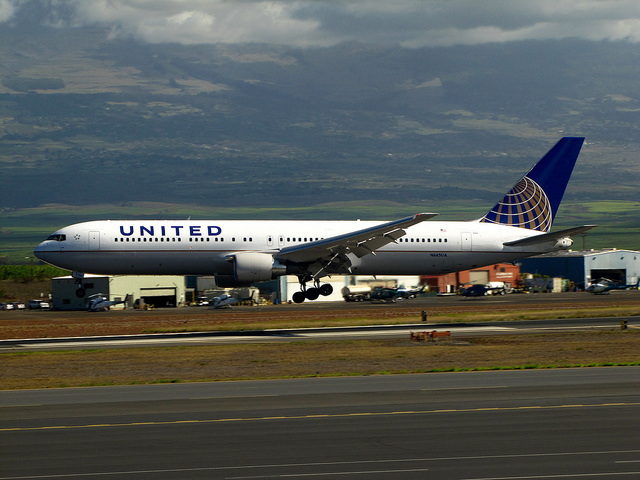Scoot B789 at Guangzhou on Sep 6th 2024, severe turbulence on approach causes 11 injuries
Last Update: October 7, 2025 / 17:40:44 GMT/Zulu time
Incident Facts
Date of incident
Sep 6, 2024
Classification
Report
Airline
Scoot Airlines
Flight number
TR-100
Departure
Singapore, Singapore
Destination
Guangzhou, China
Aircraft Registration
9V-OJD
Aircraft Type
Boeing 787-9 Dreamliner
ICAO Type Designator
B789
Singapore's TIB released their final report concluding the probable causes of the accident were:
- Between 0003hrs when the aircraft entered Sanya FIR and the turbulence encountered at 0044hrs, the flight crew observed no weather on their flight path and needed only to perform minor deviations to the flight path to circumnavigate some isolated small patches of weather. Hence, the PIC opted to leave the fasten-seat-belt signs off. The descent had not reached the 10,000 feet level where the flight crew would be required to turn on the fasten-seat-belt signs.
- The aircraft encountered turbulence when it was descending through 18,700 feet. The investigation team opines that the turbulence encounter was more likely associated with the convective cell that had emerged by 0042hrs about 6.6nm to the south of the aircraft. However, this patch of convective activity was to the rear of the aircraft and was not displayed on the aircraft’s WXR, and the pilot could not see the weather behind the aircraft.
- The occurrence underscores the need for flight crews to be cautious when operating near convective activities and the importance for passengers to fasten their seat belt while seated, even when the flight appears smooth.
The TIB summarized the sequence of events:
At about 0041hrs, Hong Kong ATC instructed the flight crew to descend to 14,800 feet. The flight crew initiated the descent as instructed. According to the flight crew, the WXR display did not show any weather return along the flight path and showed only small green patches3 about 30nm to the left of the flight path. The aircraft was flying in and out of light clouds and did not experience any turbulence. The PIC assessed that the flight path ahead would be smooth and felt that he could let the passengers have more time to use the lavatories before switching on the fasten-seat-belt signs.
At about 0044hrs, when the aircraft was descending through 18,700 feet and approaching waypoint TAMOT, the aircraft encountered turbulence. Data from the digital flight data recorder (DFDR) showed that the vertical acceleration decreased from +1G to +0.71G in 0.99 seconds, then increased to +2.86G in 0.43 seconds (during which the stick shaker4 was activated) and then decreased to +0.36G in 1.25 seconds, before stabilising at +1G after another 4 seconds.
According to the PIC, he switched on the fasten-seat-belt signs as soon as the turbulence was felt. In response to the stick shaker activation, the flight crew assessed the information displayed on the cockpit instruments. Aircraft parameters appeared normal to them. The autopilot remained engaged throughout the turbulence encounter and the PIC did not deem it necessary to disengage it. DFDR data showed that the aircraft pitch angle reached a peak of +1.02° (nose up) around the time the stick shaker was activated, before pitching downward to -1.03° (nose down) 1.26 seconds later. The indicated wind speed was relatively stable during the turbulence encounter.
The TIB annotated that the location of Typhoon Yagi as indicated in the Tropical Cyclone Warning Bulletin issued by the Hong Kong Observatory (HKO) at 0045hrs on 6 September 2024 (one minute after the incident aircraft’s turbulence encounter) was about 195nm southwest of the aircraft.
The TIB analysed:
The aircraft encountered turbulence at about 0044hrs when it was descending through 18,700 feet towards 14,800 feet. Before that, the aircraft had been having a relatively smooth flight since entering Sanya FIR at around 0003hrs, with the flight crew observing no weather ahead on their flight path and on the WXR display and needing only minor deviations to the flight path to circumnavigate some small isolated patches of weather. During this period, the fasten-seat-belt signs remained off. This was an understandable decision on the part of the PIC in view of the absence of adverse weather prior to the commencement of descent. After all, the descent had not reached the 10,000 feet level where the flight crew would be required to turn on the fasten-seat-belt signs.
The aircraft encountered turbulence when it was descending through 18,700 feet. Given that, at the time of the turbulence event, Yagi was some 195nm from the incident aircraft (as known from HKO’s Tropical Cyclone Warning Bulletin), the investigation team does not believe that Yagi was a factor in the turbulence encounter. The investigation team opines that the turbulence encounter was more likely associated with the convective cell that had emerged by 0042hrs about 6.6nm to the south of the aircraft, as shown in the series of ground weather radar images (see Figure 4 in paragraph 1.6.4.1). However, it must be noted that, the flight crew did not have the benefit of these ground weather radar images. The flight crew observed no significant weather on their flight path.
Incident Facts
Date of incident
Sep 6, 2024
Classification
Report
Airline
Scoot Airlines
Flight number
TR-100
Departure
Singapore, Singapore
Destination
Guangzhou, China
Aircraft Registration
9V-OJD
Aircraft Type
Boeing 787-9 Dreamliner
ICAO Type Designator
B789
This article is published under license from Avherald.com. © of text by Avherald.com.
Article source
You can read 2 more free articles without a subscription.
Subscribe now and continue reading without any limits!
Read unlimited articles and receive our daily update briefing. Gain better insights into what is happening in commercial aviation safety.
Send tip
Support AeroInside by sending a small tip amount.
Related articles
Scoot B789 at Singapore on Apr 30th 2024, smell of smoke on board
A Scoot Boeing 787-9, registration 9V-OJD performing flight TR-280 from Singapore (Singapore) to Denpasar (Indonesia), was climbing out of Singapore…
Scoot A21N at Singapore on Nov 22nd 2025, power bank catches fire
A Scoot Airbus A321-200N, registration 9V-NCJ performing flight TR-939 from Hong Kong (China) to Singapore (Singapore), was descending towards…
Scoot B789 near Guangzhou on Sep 7th 2024, turbulence injures 11
A Scoot Boeing 787-9, registration 9V-OJI performing flight TR-100 from Singapore (Singapore) to Guangzhou (China) with 339 passengers and 13 crew,…
Scoot A320 near Ho Chi Minh City on Feb 5th 2025, technical fault
A Scoot Airbus A320-200, registration 9V-TRS performing flight TR-124 from Singapore (Singapore) to Changsa (China), was enroute at FL360 about 200nm…
Scoot B789 at Singapore on Feb 5th 2024, landed on occupied runway
A Scoot Boeing 787-9, registration 9V-OJH performing flight TR-189 (dep Feb 4th) from Hangzhou (China) to Singapore (Singapore) with 354 people on…
Scoot B789 at Taipei on Jun 19th 2023, dropped nose wheel in flight
A Scoot Boeing 787-9, registration 9V-OJF performing flight TR-897 from Seoul (South Korea) to Taipei (Taiwan), landed on Taipei's runway 23L at…
Newest articles
American A321 near Houston on Nov 23rd 2025, fumes on board
An American Airlines Airbus A321-200, registration N139AN performing flight AA-2118 from Orlando,FL to Phoenix,AZ (USA), was enroute at FL320 about…
United B763 near London on Nov 23rd 2025, fumes on board
A United Boeing 767-300, registration N665UA performing flight UA-12 from Zurich (Switzerland) to Chicago O'Hare,IL (USA), was enroute at FL320 about…
Subscribe today
Are you researching aviation incidents? Get access to AeroInside Insights, unlimited read access and receive the daily newsletter.
Pick your plan and subscribePartner

ELITE Simulation Solutions is a leading global provider of Flight Simulation Training Devices, IFR training software as well as flight controls and related services. Find out more.
SafetyScan Pro provides streamlined access to thousands of aviation accident reports. Tailored for your safety management efforts. Book your demo today
AeroInside Blog
Popular aircraft
Airbus A320Boeing 737-800
Boeing 737-800 MAX
Popular airlines
American AirlinesUnited
Delta
Air Canada
Lufthansa
British Airways








